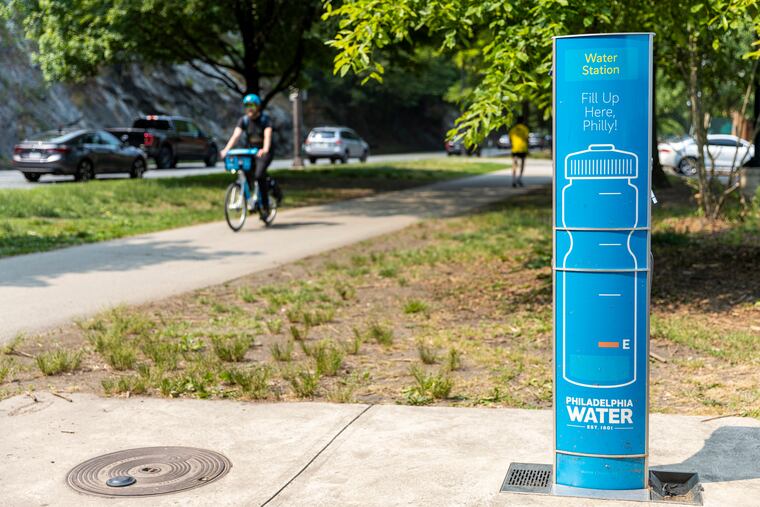When do the Schuylkill River Trail fountains turn on? What it takes to ‘flush out those pipes.’
Thirsty while on the Schuykill River Trail? Here's what the Water Department has to do to get the water stations ready, and when they'll be on.

You venture out to the Schuylkill River Trail to soak in some sun with the pup, maybe your bike. Beautiful day, but it’s warming up, you could sure use some water, and that’s when a hit of blue catches your eye. Eureka, a water fountain!
Between spring (ideally) and November, these hydration stations managed by the Water Department can provide some sweet relief on the trail. But the timing for when these fountains are turned on varies because it’s not as simple as flipping a switch.
Four blue water stations were installed along the Schuylkill River Trail from Boathouse Row to East Falls in 2016, a reprieve from the mostly fountainless path. The three-in-one fountains had the traditional spout for runners, cyclists, and walkers to drink out of, another spigot that made it easy to fill a water bottle, and a small bowl to pour one out for your parched pup.
Though few, the fountains have become a favorite of trail users, including one who wrote Curious Philly — The Inquirer’s forum for questions about the city and region — to ask about when they’d be turned on this season.
Brian Rademaekers, spokesperson for the Water Department, estimated the fountains would be up and running by mid-June this year.
“It’s like going to your Shore house,” he explained. “If you go to a place that’s been closed all winter, you really want to flush out those pipes.”
Rademaekers said it’s not as simple as flipping a switch to get the water flowing. There’s no dedicated fountain team in the department.
Every year, new filters need to be installed, all parts of the fountain need to be checked and disinfected, and the water itself is tested, then tested again to ensure it’s clean. This whole process requires participation from various staff — the Bureau of Laboratory Services does the testing but the metering unit does the flushing of pipes, and so on.
Typically, the water department tries to begin the process of restoring service as the temperatures get higher, depending on weather and staffing, but timing has varied in recent years, according to the department. A busy spring led to the later start this year, said Rademaekers.
Trail users can expect only three fountains — one near Strawberry Mansion Bridge, one near Columbia Bridge, and the one by Fairmount Water Works — to come back online after the necessary testing. The fourth fountain near the Falls Bridge went offline in 2017 and the department has no plans to bring it back.
So why have these fountains at all? Well, the Water Department’s goal in keeping these stations remains the same as it was when they were installed:
“It’s part of our overall campaign to encourage people to drink tap water and to avoid using disposable, single-use plastic, especially in the park,” said Rademaekers.
Just how much of a difference the fountains have made on the plastic trash front was not immediately clear, but Rademaekers said anything to help people choose tap over single-use plastic is a win for the department.